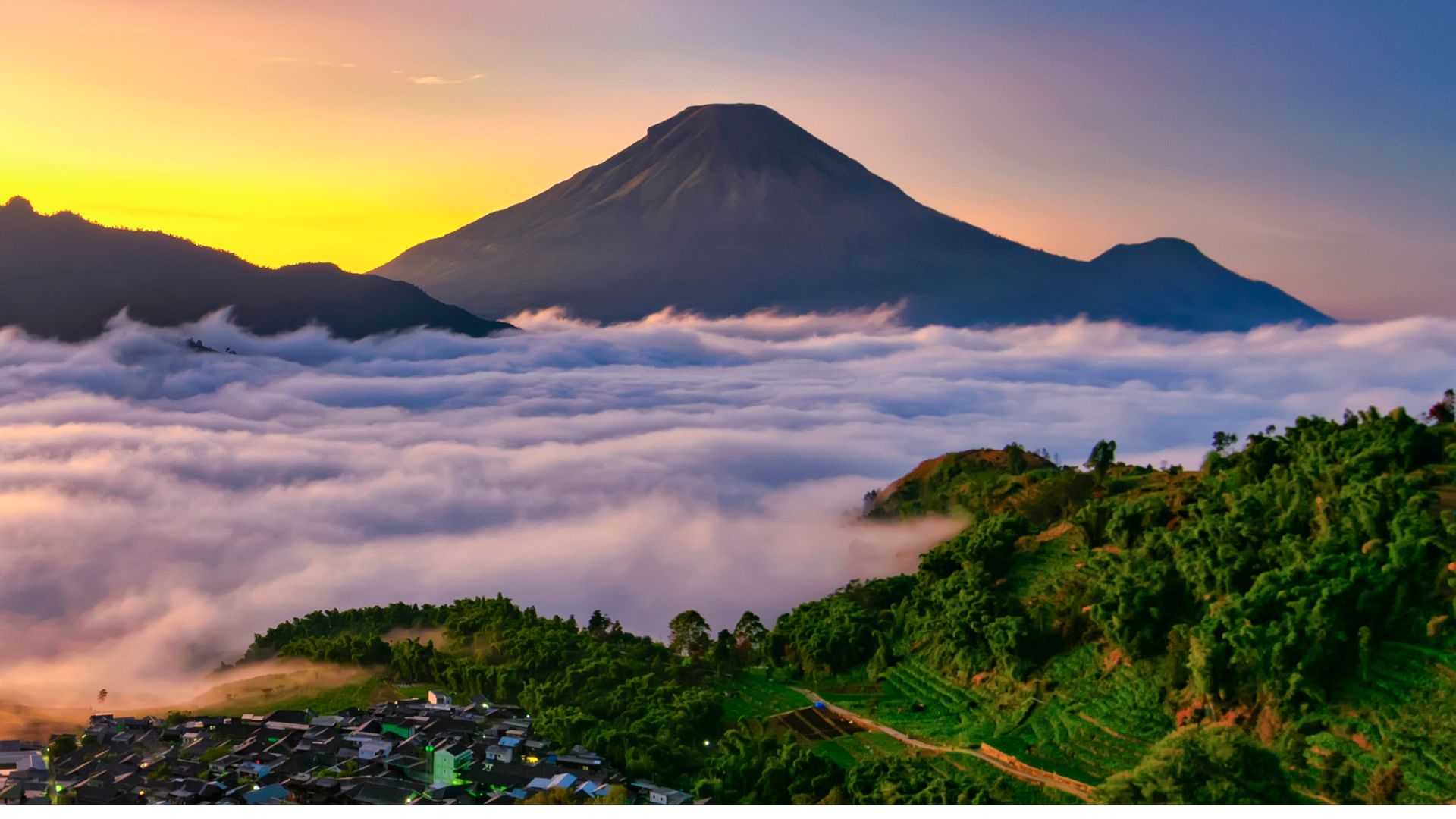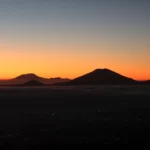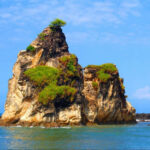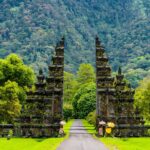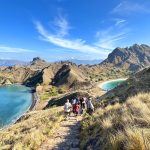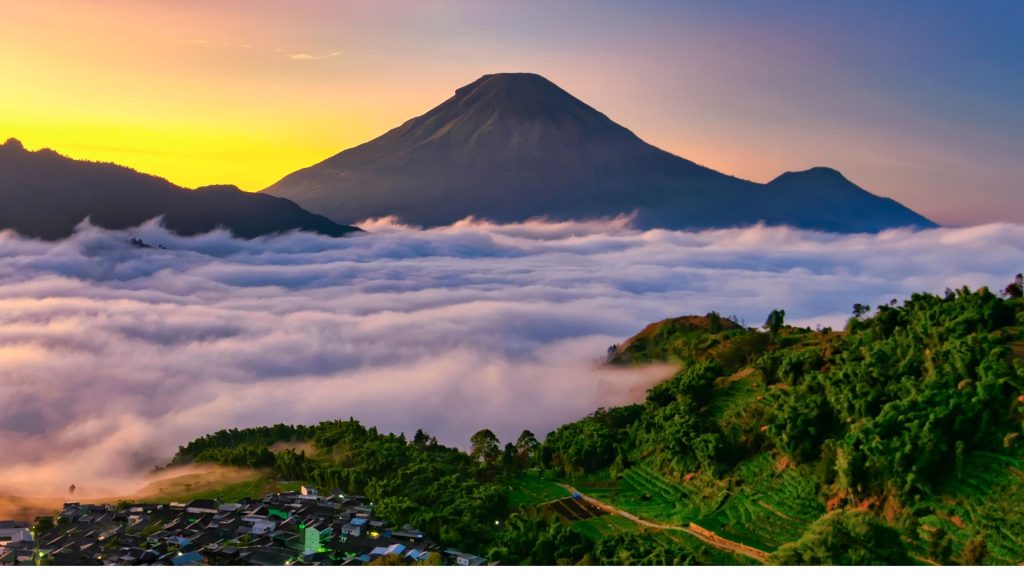
Nestled in the highlands of Central Java, the Dieng Plateau offers a captivating experience characterized by fog-shrouded mountains, historic temples, and volcanic craters. Renowned for its refreshing climate and enchanting vibe, Dieng is frequently called “the land above the clouds,” and it certainly lives up to this name.
Dieng is located about 2,000 meters above sea level in Wonosobo and Banjarnegara Regencies, Central Java, Indonesia. It’s accessible via Yogyakarta (around 4–5 hours by car) or Semarang.
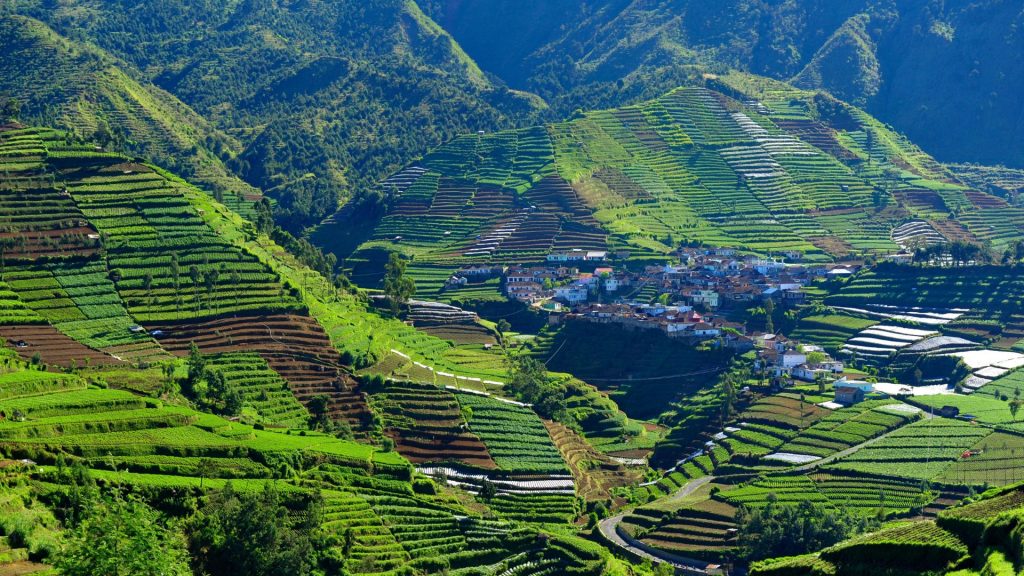
Sikidang Crater
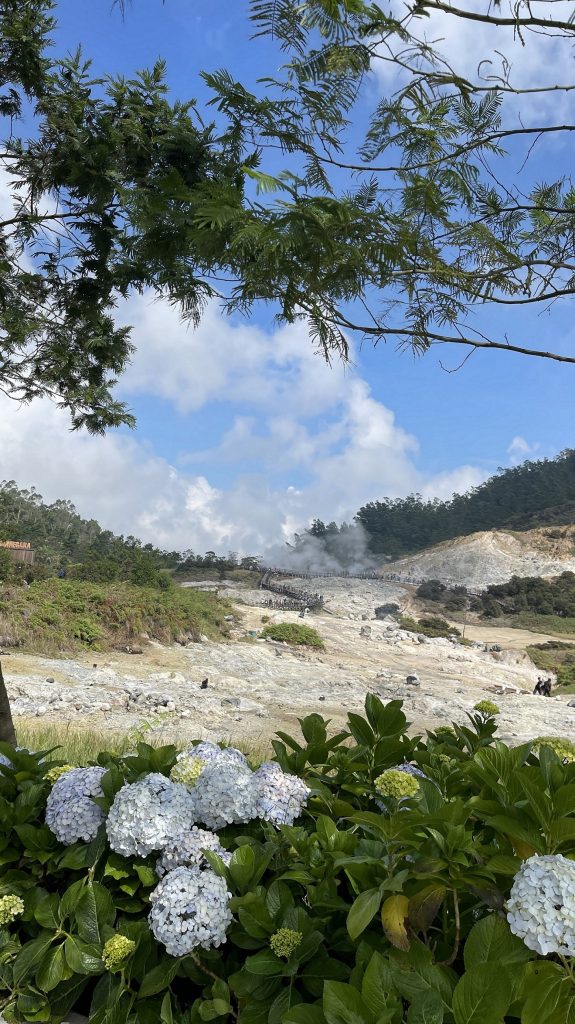
Sikidang Crater, or Kawah Sikidang, is one of the most iconic geothermal attractions on the Dieng Plateau in Central Java, Indonesia. This active volcanic crater is known for its constantly bubbling mud pools, steaming vents, and strong sulfuric aroma that fills the air. The name “Sikidang,” which means “jumping deer” in Javanese, reflects the unique behavior of the crater’s gas vents, which seem to move or “jump” from one location to another over time, much like a restless deer. Visitors can explore the area via wooden walkways and designated paths that offer a close yet safe view of the geothermal activity. The landscape is barren, rocky, and often misty, giving it an otherworldly atmosphere perfect for dramatic photography. While masks are recommended due to the strong sulfur smell, Sikidang remains one of the most accessible craters in Indonesia and a must-see stop for those exploring Dieng’s natural wonders.
Sikunir Hill
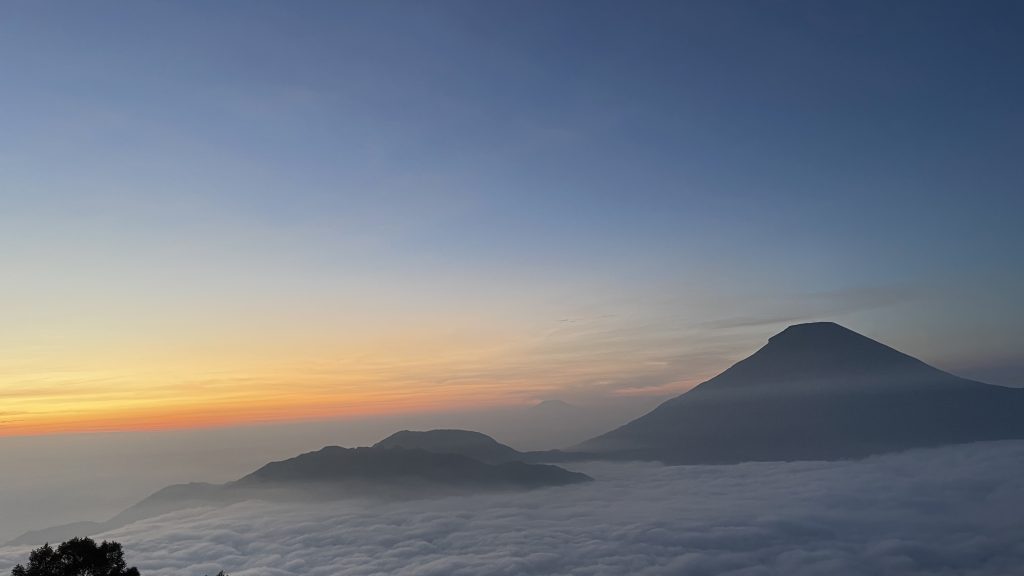
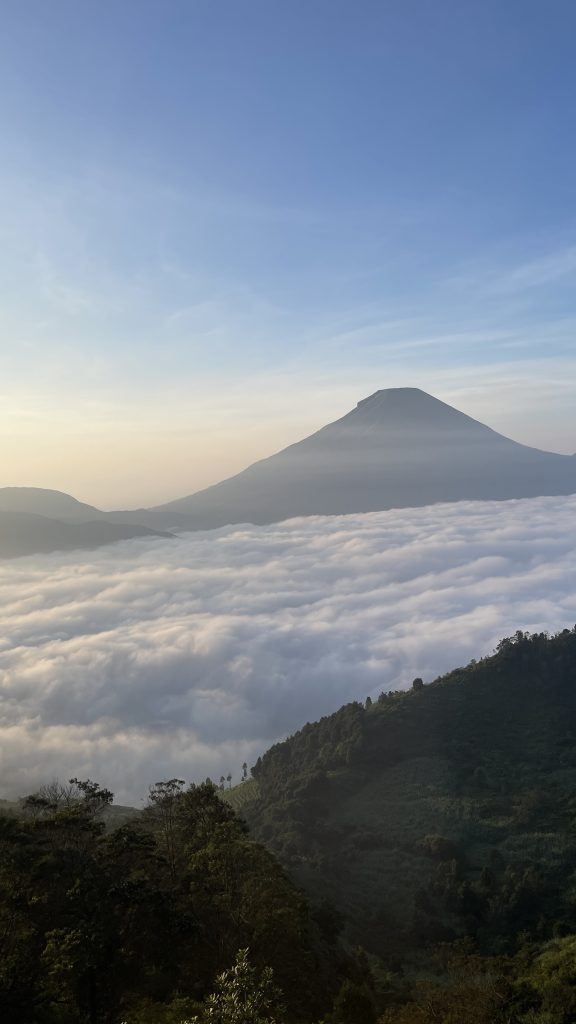
Sikunir Hill, located in the highlands of Dieng Plateau, Central Java, is a popular destination for witnessing one of the most breathtaking sunrises in Indonesia. Standing at an altitude of around 2,300 meters above sea level, Sikunir offers a panoramic view of surrounding volcanoes such as Mount Sindoro, Sumbing, Merapi, and Merbabu, often rising above a sea of clouds during the early morning hours. The hike to the top is relatively short and beginner-friendly, taking about 30–45 minutes from the base. At sunrise, the sky is painted in vibrant hues of orange and gold—earning Sikunir the nickname “Golden Sunrise” of Java. With its cool climate, scenic views, and peaceful atmosphere, Sikunir Hill is a must-visit for nature lovers and photography enthusiasts traveling to Dieng.
Curug Sikarim
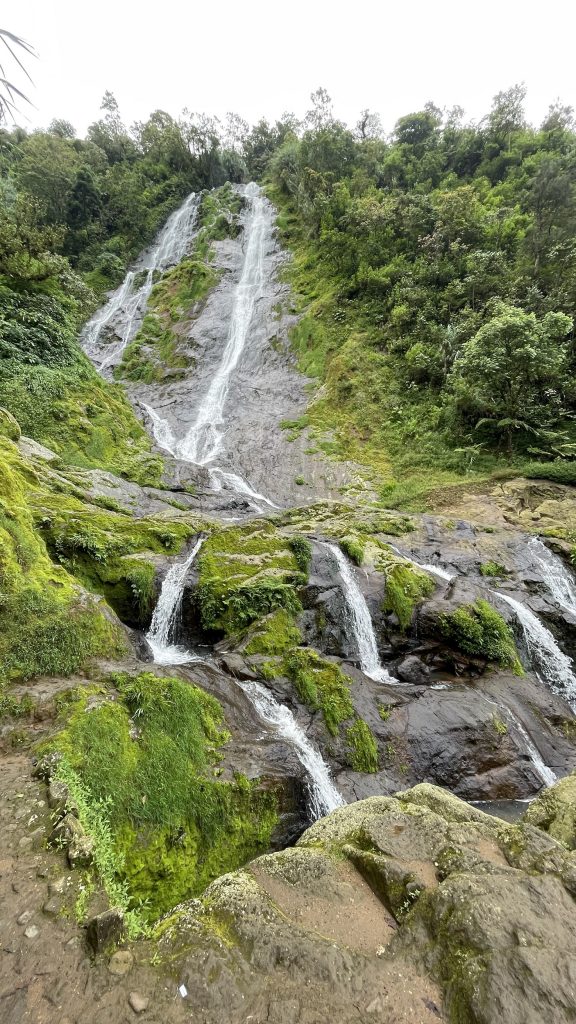
Curug Sikarim is a stunning waterfall located in Sembungan Village, Kejajar District, Wonosobo, on the slopes of Sikunir Hill in the Dieng Plateau, Central Java. Standing approximately 125 meters tall, the waterfall flows dramatically down steep rocky cliffs, fed by the overflow from Telaga Cebong. At an altitude of around 1,800–2,000 meters above sea level, the area is often shrouded in mist, giving the landscape a mystical and serene atmosphere. Although access used to be challenging due to rocky roads, improvements have made it easier to reach by vehicle, with a parking area available near the site. Visitors will find supporting facilities like gazebos, food stalls, toilets, and scenic photo spots. With its peaceful ambiance, fresh mountain air, and natural beauty, Curug Sikarim is perfect for nature lovers, photographers, and those seeking tranquility far from the crowds.
Telaga Menjer
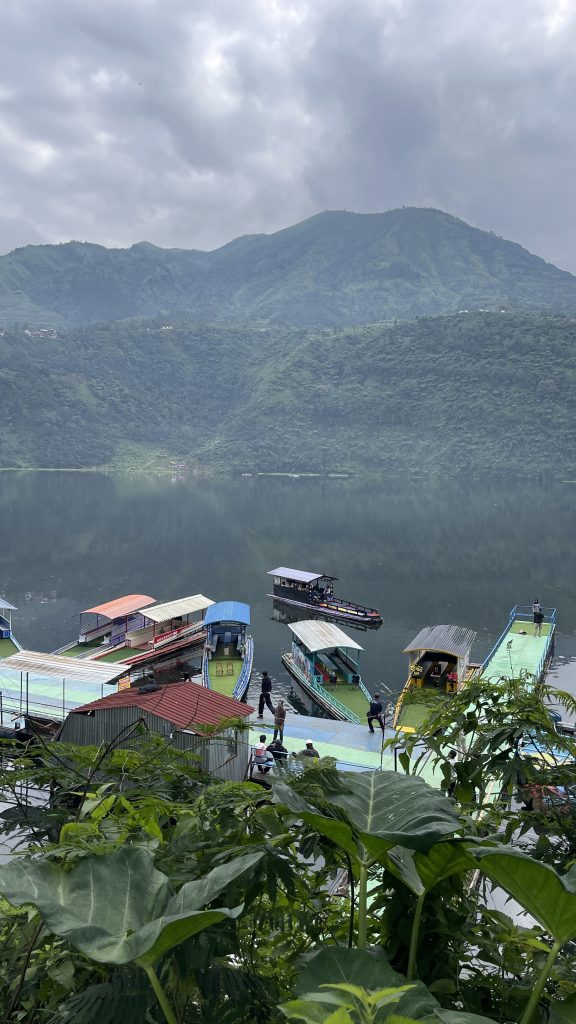
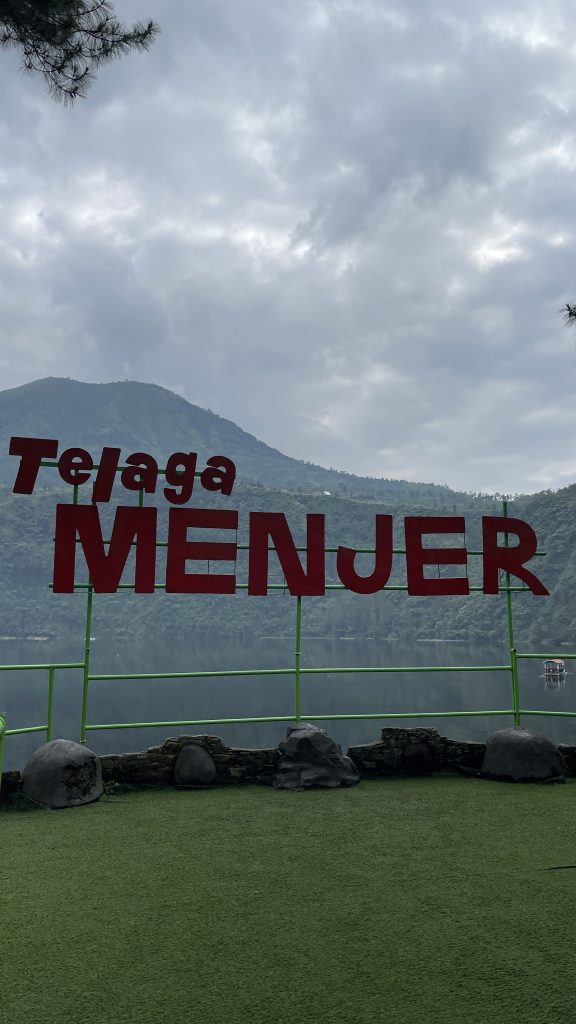
Telaga Menjer is a scenic natural lake situated in Maron Village, Garung District, Wonosobo Regency, at the base of the Dieng Plateau. Covering approximately 70 hectares and reaching depths of 45 to 50 meters, the lake sits at an elevation of around 1,300 meters above sea level. Surrounded by lush green hills and tea plantations, it provides a cool, tranquil environment ideal for relaxation and photography—especially during early mornings when mist gently hovers over the still waters.
Visitors can take a peaceful ride on traditional wooden boats, typically costing around 30,000 IDR per person, or enjoy fishing for local species such as tilapia and carp. Since the 1980s, the lake has also served as a source of hydroelectric power and irrigation, benefiting nearby communities and farming areas. While basic facilities like toilets, food stalls, a prayer area, and parking are available, the site remains relatively undeveloped, preserving its quiet and natural charm.
Open 24 hours a day with an affordable entrance fee (around 5,000–10,000 IDR), plus optional charges for boat rides or parking, Telaga Menjer is a peaceful destination that offers a refreshing escape, picturesque views, and a serene atmosphere away from busy tourist crowds.
Hot Spring
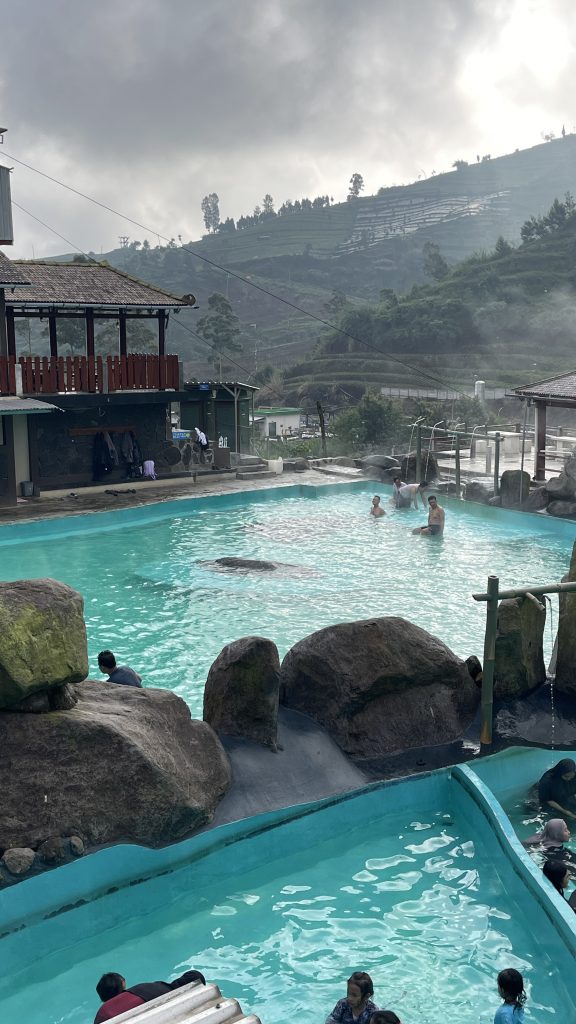
One of the most popular hot springs in the Dieng Plateau is the Banyu Alam Bitingan Hot Spring. It is a naturally heated thermal bath located in Bitingan Village, Kepakisan, Batur, Banjarnegara, just a 15 to 20-minute drive from Dieng. Surrounded by lush mountain slopes and with steam rising from Gunung Sipandu in the background, this open-air pool features clear, mineral-rich springs that are believed to soothe sore muscles, improve circulation, and nourish the skin. The facility includes separate pools for men and women, as well as a shallow area for children, all elegantly enclosed with stone accents. It is open daily from approximately 07:00 to 20:00, with an entry fee of around Rp 15,000 per person. Amenities such as parking, changing rooms, toilets, food stalls, and a prayer space are available for guests. Visitors can relax in the warm waters while enjoying breathtaking panoramic views or unwind in on-site seating and cozy gazebos. On weekends, guests have the option to add excitement with a gondola ride for about Rp 20,000. Banyu Alam Hot Springs is the perfect escape from Dieng’s chill, offering comfort in warm water amidst the serene beauty of the highlands.
Arjuna Temple
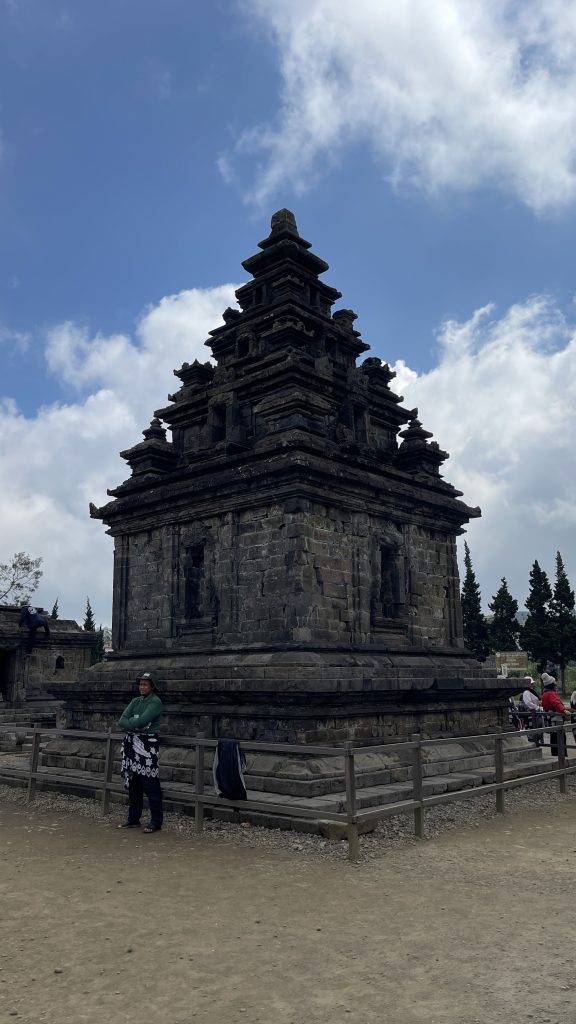
Arjuna Temple, located on the Dieng Plateau in Central Java, is one of the oldest Hindu temple complexes in Indonesia, dating back to the 7th or 8th century during the Sanjaya dynasty. Set against a backdrop of misty mountains and cool highland air, the temple complex features five main temples—Arjuna, Srikandi, Puntadewa, Sembadra, and Semar—each showcasing ancient Javanese architecture and religious symbolism. Dedicated to Lord Shiva, these temples were believed to serve as places of worship and meditation for Hindu priests. Surrounded by green open spaces and near other attractions like Telaga Warna and Sikidang Crater, Arjuna Temple is a must-visit for those interested in history, culture, and spiritual heritage in a peaceful natural setting.
Mount Prau
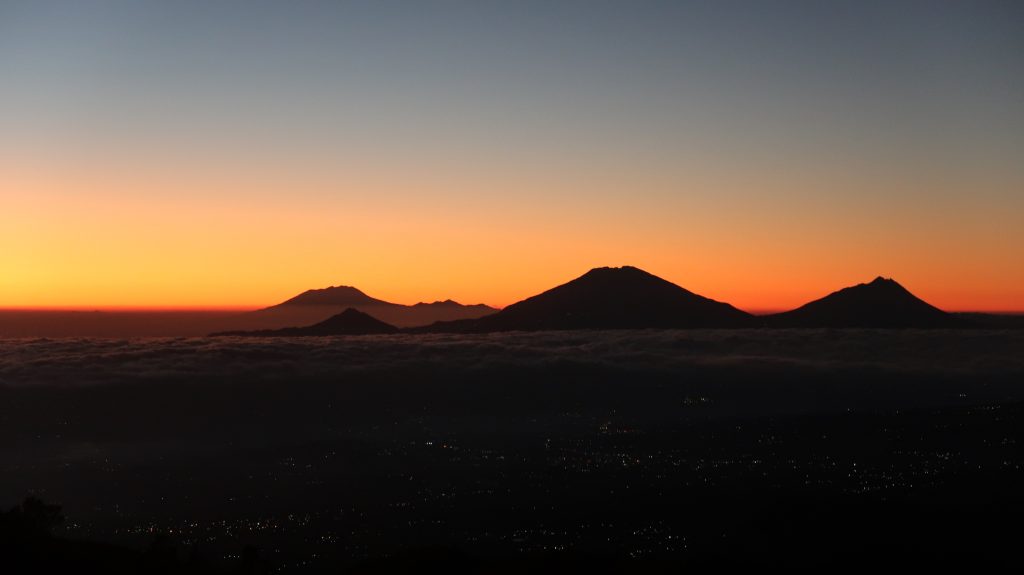
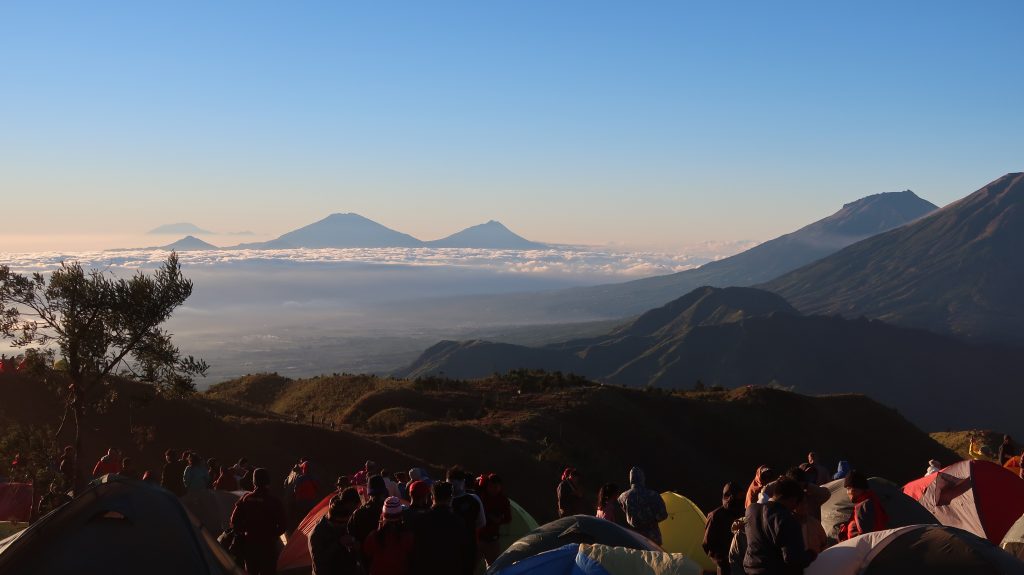
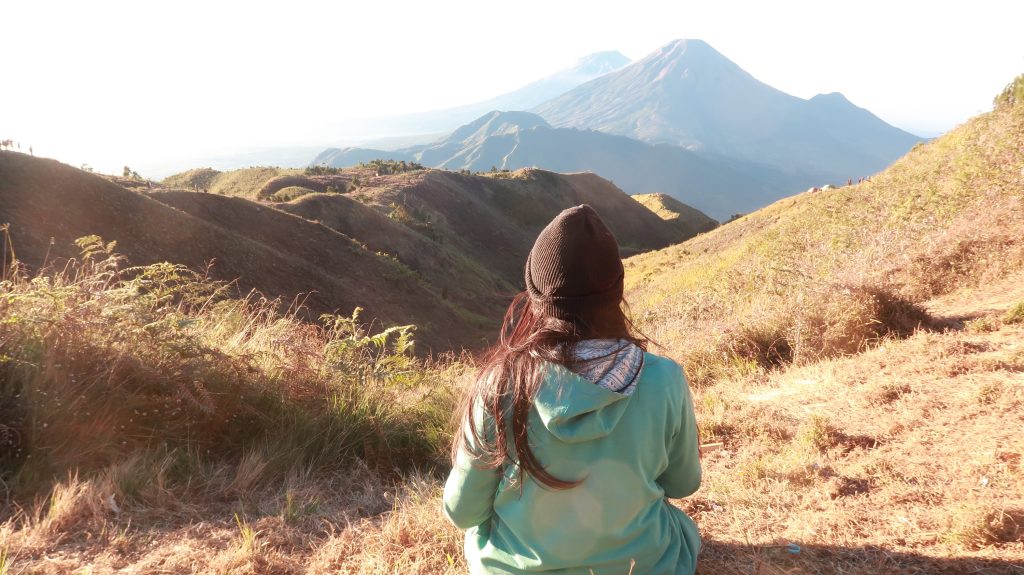
Mount Prau, which stands at approximately 2,565 meters above sea level on the Dieng Plateau in Central Java, is a popular destination for hikers of all levels, particularly beginners. It offers breathtaking panoramic views and the famous “Golden Sunrise.” The mountain, which resembles an upturned boat (hence its name “Prau”), can be accessed via six official trails. Among these, the Dieng and Patak Banteng routes are the most favored due to their beautiful scenery and moderate difficulty. Most climbers start their trek in the early morning, around 2–3 AM, to reach the summit in time for the sunrise. The journey takes them through grasslands, pine forests, and the well-known Teletubbies Hill, which is decorated with daisies. Mount Prau also features well-supported base camps that provide amenities such as toilets, prayer areas, food stalls, and affordable permits, costing around IDR 30,000–35,000. This makes Mount Prau a memorable and accessible alpine experience in the heart of Java’s highlands.
Swiss van Java
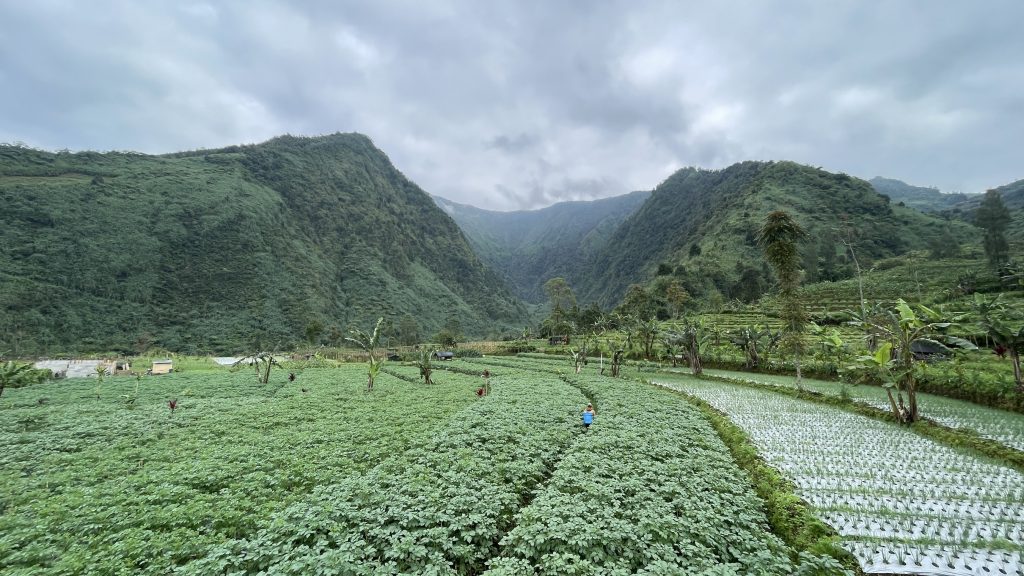
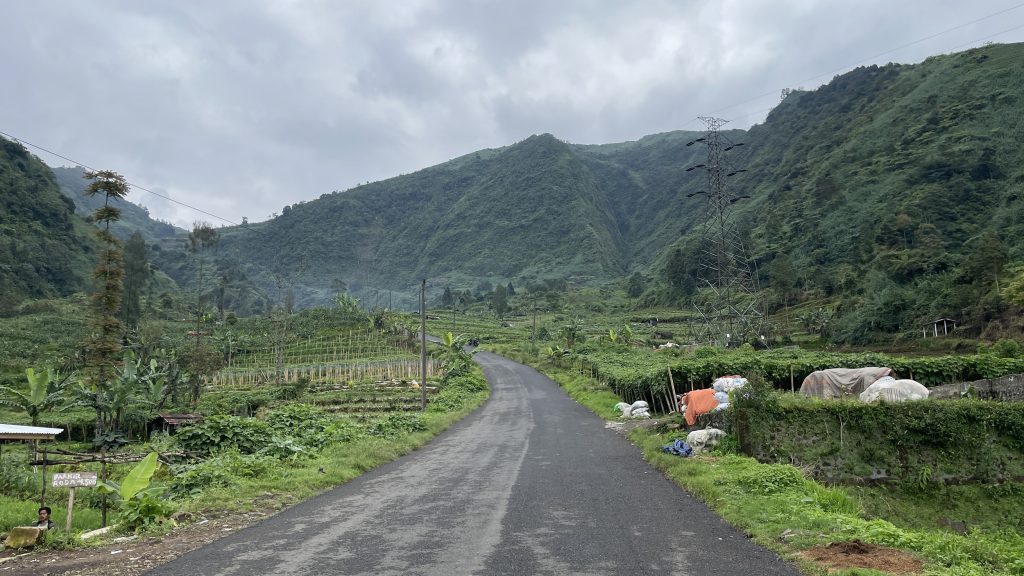
Swiss Van Java describes a picturesque mountain route in Wonosobo that meanders through verdant highlands en route to the Dieng Plateau. The road winds gracefully through hills lined with vegetable farms and small rural settlements, offering stunning views that resemble the Swiss Alps. Particularly striking in the areas near Desa Mlandi and Sembungan, this route is known for its cool climate, misty air, and highly photogenic scenery—especially beautiful at sunrise or in the early morning hours before the fog lifts. Travelers should be cautious, as the road features steep inclines, sharp turns, gravel stretches beyond Curug Sikarim, and occasional low visibility. More than just a means of transportation, the Swiss Van Java is a thrilling and scenic passage leading to some of Dieng’s most famous attractions, including Sikidang Crater, Telaga Warna, and Sikunir Hill.
July to August is the dry season and best for travel. These months also bring the Dieng Culture Festival, featuring jazz music under the stars, lanterns, and traditional rituals.
1. Dress Warmly
- Dieng’s altitude (over 2,000 meters) makes it cold year-round, especially in the early morning and at night. Temperatures can drop below 10°C.
- Bring a jacket, scarf, gloves, and layers — especially if you’re planning to see the sunrise from Mount Sikunir or Mount Prau.
2. Start Activities Early
- The weather is usually clearest in the morning. Plan to visit viewpoints, lakes, and craters before noon.
- Sunrise spots like Sikunir and Mount Prau require early hikes (start around 2–3 AM).
3. Transportation Tips
- Roads are steep and winding; if self-driving, make sure your vehicle is in good condition and fuel is topped up.
- Hiring a local driver or tour jeep is highly recommended for safety and ease.
- Public transport is limited, so arranged transport is better for flexibility.
4. Plan for Altitude
- If you’re not used to higher elevations, walk slowly and stay hydrated.
- Avoid too much exertion on the first day.
5. Prepare for Limited Connectivity
- Mobile signal can be weak or spotty, especially in remote spots.
- Download offline maps and save important info in advance.
6. Book Accommodation Early
- Dieng gets crowded on weekends and during festivals (like the Dieng Culture Festival in August).
- Book your homestay or guesthouse in advance, especially during peak seasons.
7. Bring a Good Camera or Power Bank
- The landscapes are breathtaking — from golden sunrises to misty temples and crater lakes.
- A power bank is essential since you’ll be outdoors a lot and charging spots may be limited.
8. Respect Local Culture
- Dieng is home to traditional Javanese customs and sacred sites.
- Dress modestly, especially when visiting temples or villages.
9. Be Prepared for Basic Facilities
- Some natural spots like hot springs or Mount Prau basecamps have limited amenities.
- Bring your own tissues, hand sanitizer, or snacks just in case.
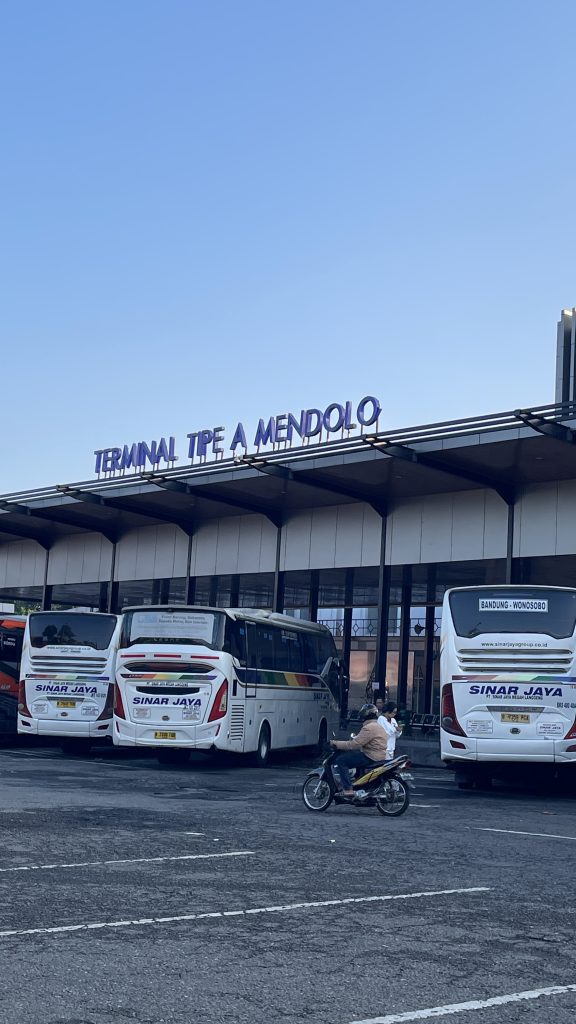
Getting to Dieng from Major Cities
From Yogyakarta or Semarang: Take a train or bus to Wonosobo (the nearest town to Dieng). There’s no direct train to Dieng.
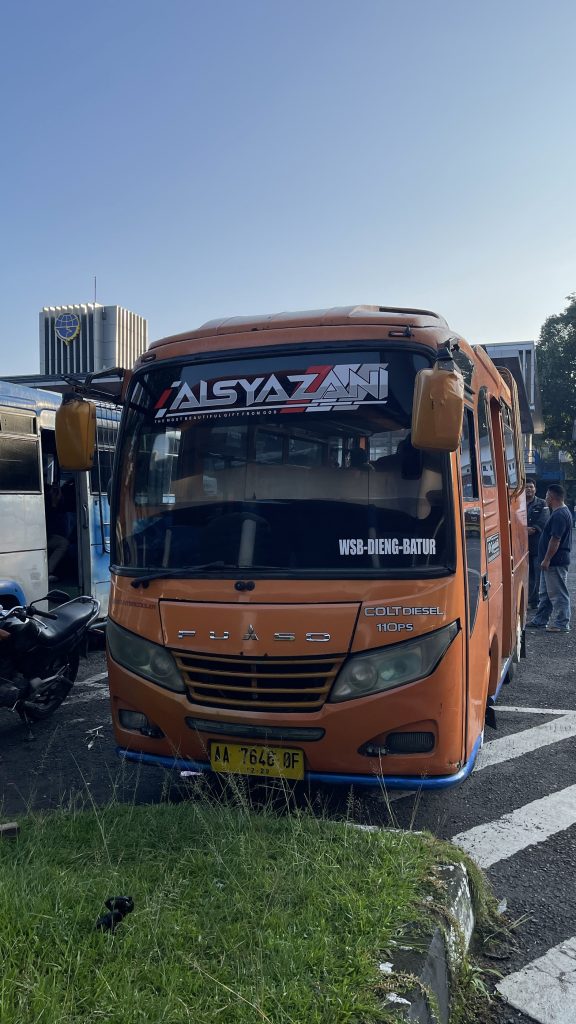
From Wonosobo to Dieng
- Public minibuses (“angkot”) are available from Terminal Mendolo or the Wonosobo town center to Dieng (±1.5 hours).
- For more comfort or if you’re arriving late, hire an ojek (motorbike taxi) or chartered car.
- Cost: Minibus ~IDR 20,000–30,000 | Ojek ~IDR 50,000–70,000.
Tip: Travel during daylight, as public transport options fade in the evening.
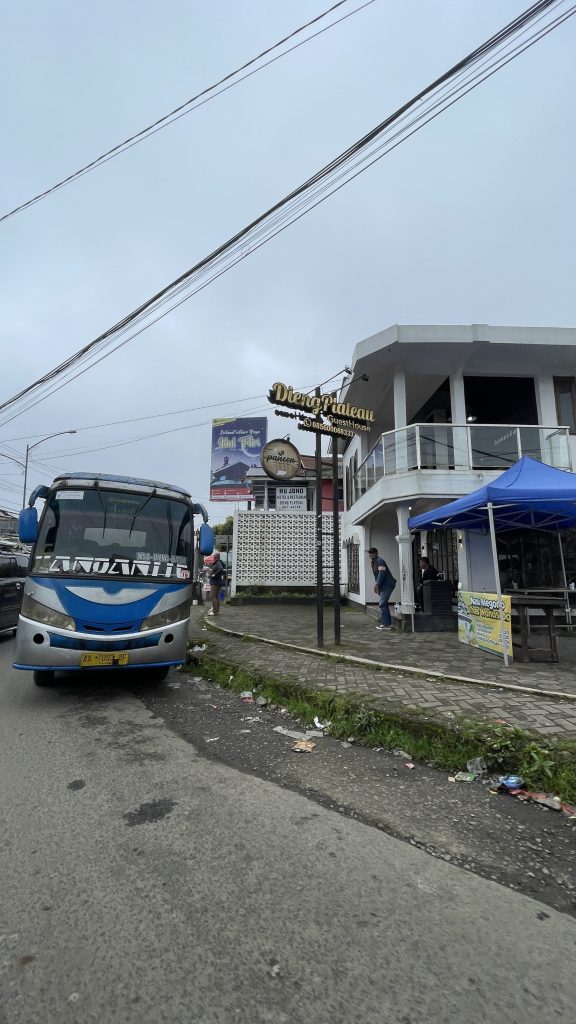
From Mendolo Terminal in Wonosobo, buses heading to Dieng can drop you off at any point along the route upon request.
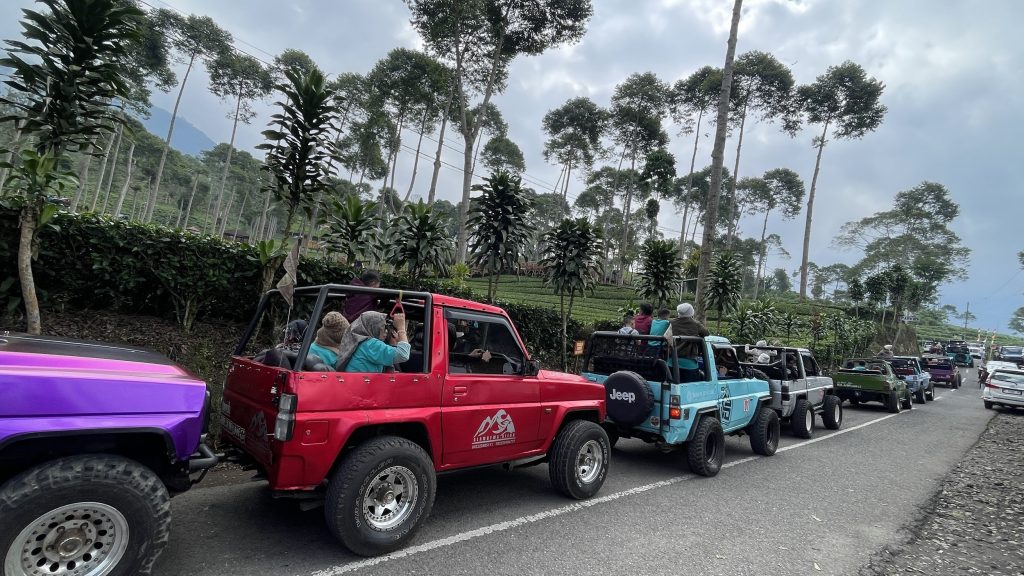
Jeep Tour
The Dieng Plateau jeep tour is categorized into three zones based on the route and destinations. Zone 1 is the most basic and costs about Rp 350,000 per jeep, Zone 2 covers a wider area and is priced at around Rp 600,000, while Zone 3 offers the most scenic and remote attractions, costing approximately Rp 900,000 per jeep.
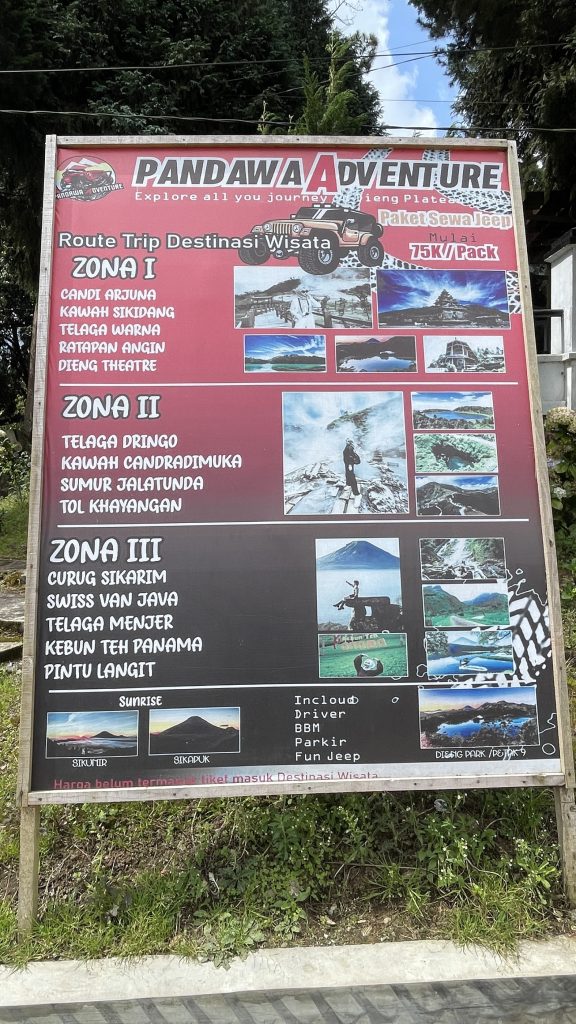
Car Rental or Private Driver
- Best for groups or if you want flexibility visiting scattered spots like Mount Prau Basecamp, tea plantations, or off-the-path waterfalls.
- You can rent a car with a driver from Wonosobo for around IDR 500,000–700,000/day.
- Recommended if you’re short on time or not confident navigating the winding roads.
Ojek
Ojek is one of the most practical ways to get around Dieng, especially for solo travelers or those without private transport. They’re perfect for short distances, early morning hikes, or reaching spots not served by public transport.
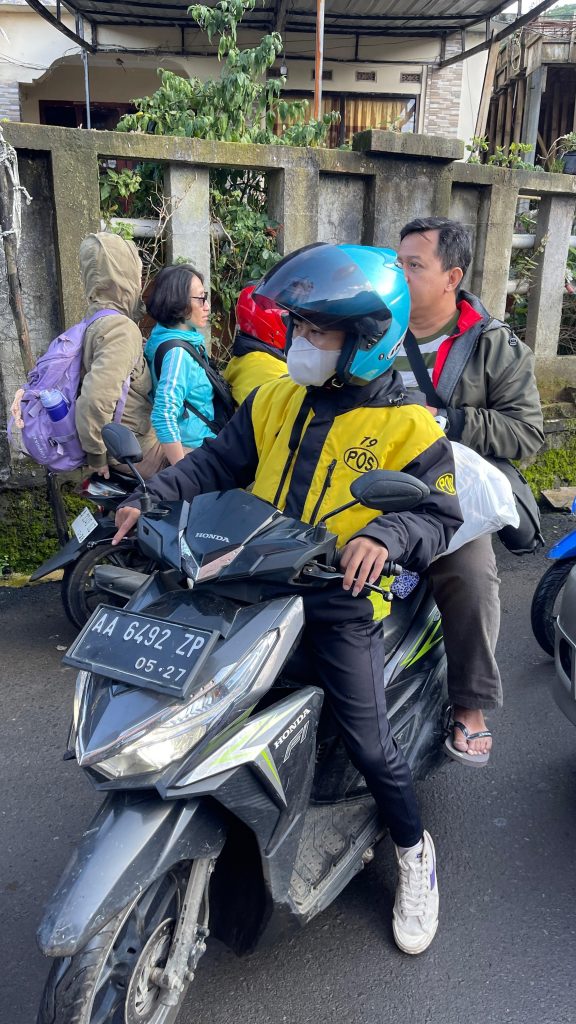
Tips:
- Ask your guesthouse to arrange local transport—they usually know reliable ojek drivers or jeep guides.
- Travel during daylight; public transport and ojek services slow down after dark.
- Carry small bills (IDR 10k, 20k) for easier transactions.
Accommodation around Dieng mainly consists of budget-friendly homestays, guesthouses, and small hotels, especially in Dieng Kulon and Dieng Wetan villages. These places offer basic yet comfortable amenities, often with private bathrooms, hot water, and breakfast included. Many are family-run and provide a warm local experience. For backpackers or solo travelers, shared rooms or dorms are available, while some mid-range lodges offer scenic views and easy access to top attractions like Arjuna Temple or Sikunir Hill. Booking in advance is recommended during weekends or festival seasons.
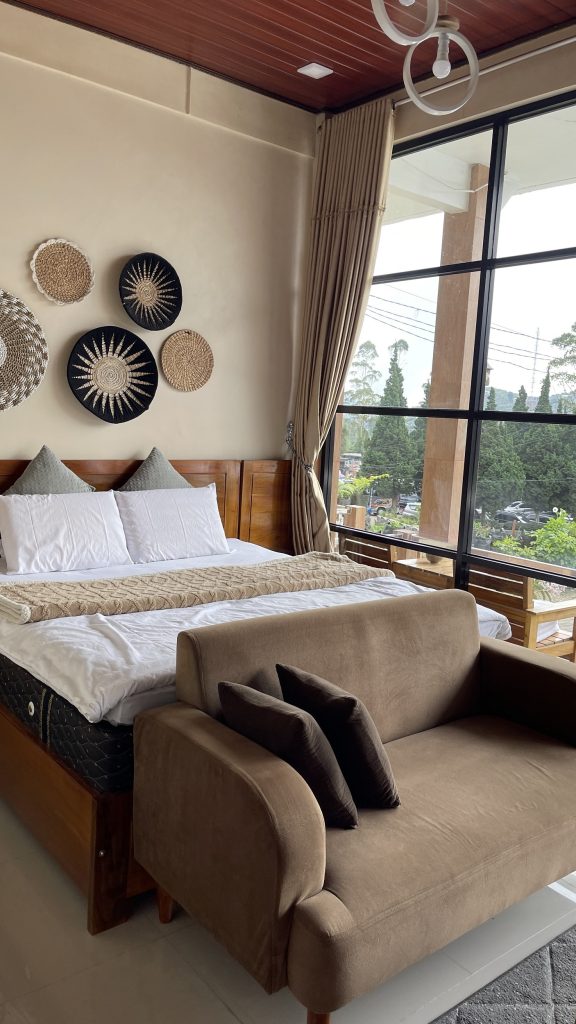
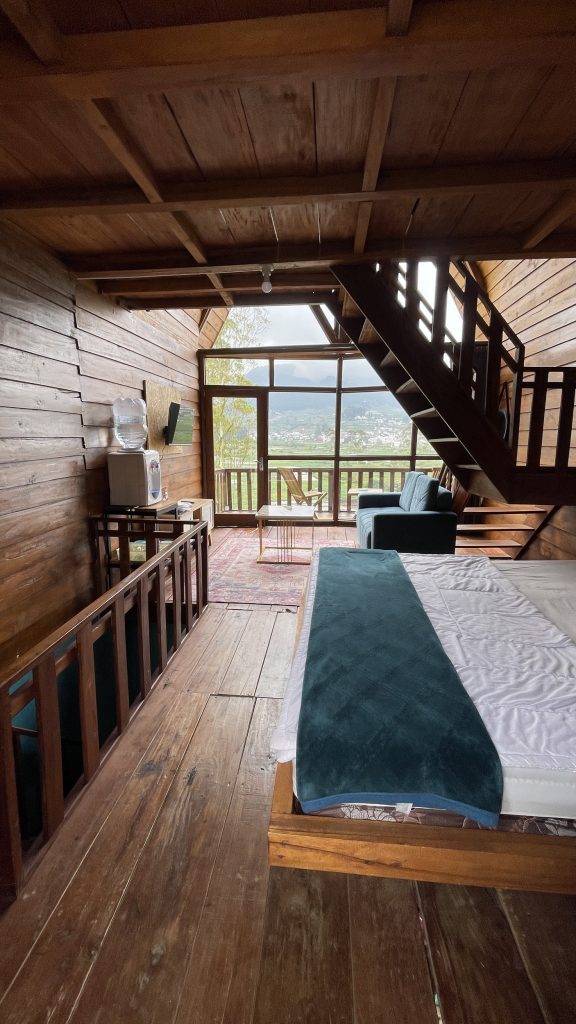
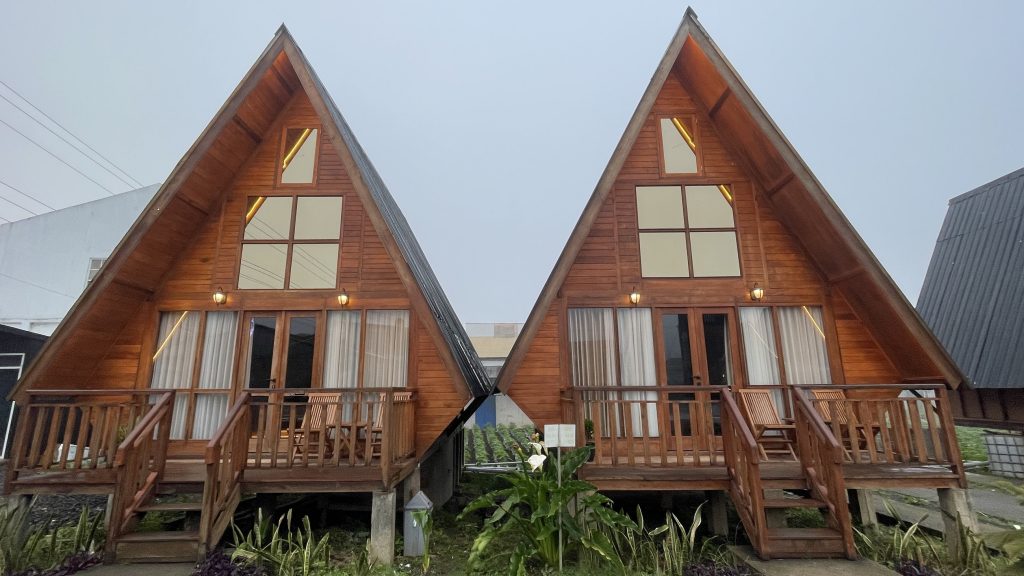
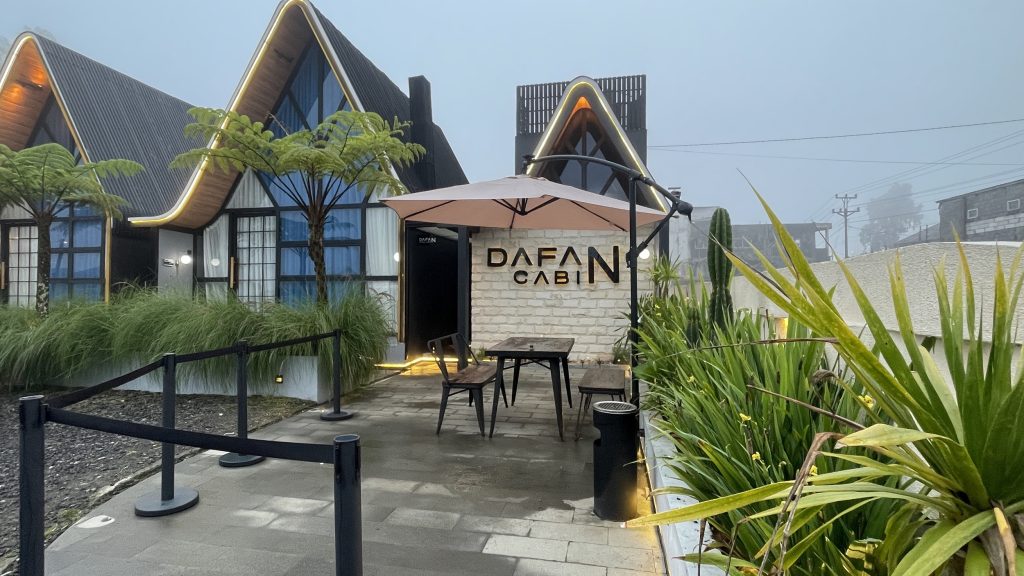
Also read: Labuan Bajo, the enchanting entrance to Indonesia’s breathtaking natural wonders!

